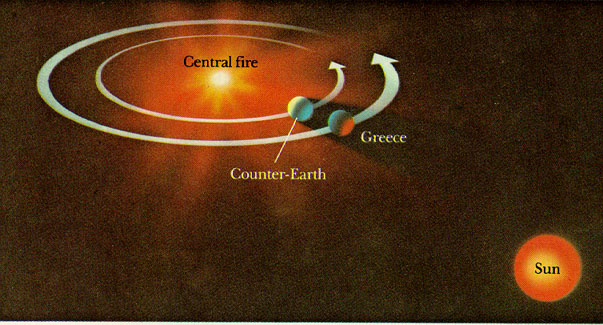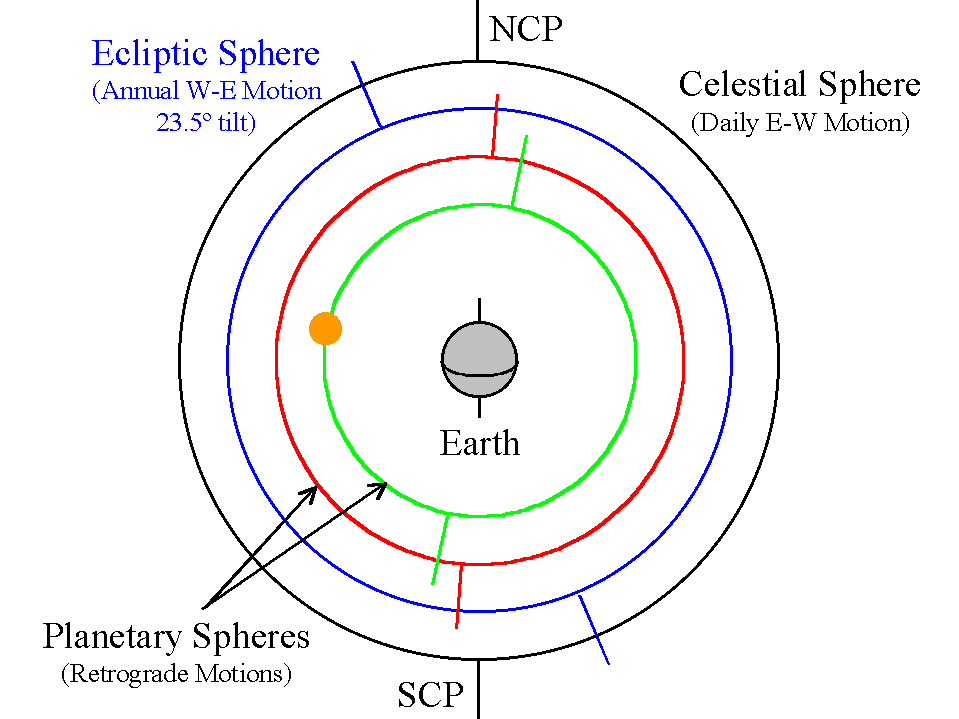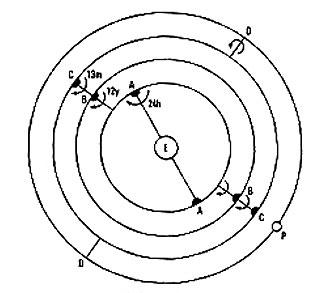The story of the Cosmos we know today, started about 14 billion years ago, with a 'Big Bang'. But the scientific journey in this planet, where we live short, started with the discovery of fire. But we started to reveal the story of Cosmos before 6th century BC, till when, our ancestors thought that, the earth is a flat place, and the sky is a tomb around it which contains the sun and the moon. They not only thought the sky as a tomb or a lid, but also imagined that, the stars are 'dots of lights' and the sun as a fireball and the moon as a lightened divine object. But in 4th century BC, Greeks first tried to get out of this 'bounded' concept of the world. They first said that, those 'dots of lights' are actually planets and stars which are situated a very long distance away. The first model of this 'so-called' Universe was designed by Ptolemy from Egypt. It had many errors but though, it was a very valuable contribution for that time.
In 1600 BC, the Babylonians created a 'star-list' and also started to record the positions of those stars. But as they were priest, they described the universe from their religious view, which was not able to be granted scientifically.
In 1600 BC, the Babylonians created a 'star-list' and also started to record the positions of those stars. But as they were priest, they described the universe from their religious view, which was not able to be granted scientifically.
 |
| Ancient paradigm about the Universe |
 Greek geometrician Pythagoras first attempted to make a more scientifically appreciative model of the universe in 500 BC. He is the first who suggest that, earth is not flat, but round and everything else turns around it. After him, his followers modified his model and made it strange. They put a fire-object in the middle of the model instead of earth. But, that fire-object was not the sun. It was imaginary. They imagined, all the planets and satellites are turning around this fireball including earth and the moon, even the sun! Every object in the model was a sphere. Actually, the model was just a 'set' of spheres, which was made to describe the solar system, yet known that time. The entire model was covered with another larger sphere which indicated the 'edge' of the solar system! They named this sphere as 'the sphere of stars'.
Greek geometrician Pythagoras first attempted to make a more scientifically appreciative model of the universe in 500 BC. He is the first who suggest that, earth is not flat, but round and everything else turns around it. After him, his followers modified his model and made it strange. They put a fire-object in the middle of the model instead of earth. But, that fire-object was not the sun. It was imaginary. They imagined, all the planets and satellites are turning around this fireball including earth and the moon, even the sun! Every object in the model was a sphere. Actually, the model was just a 'set' of spheres, which was made to describe the solar system, yet known that time. The entire model was covered with another larger sphere which indicated the 'edge' of the solar system! They named this sphere as 'the sphere of stars'.Aristotle comes next in the chain. No doubt that, he was extremely wise, but though he also was the father of much false knowledge. His concept of 'the universe' was more religious than scientific. But though, people at that time admitted his concept as universal truth and the priest also believed and announced this concept as 'the law of the God'! Aristotle modified the model of Eudoxus adding more 28 spheres in it. This model had 55 spheres, a total. This model was also philosophically satisfactory, but scientifically it was still useless. Aristotle classified the world in two areas- one, 'the holy Sky' and two, 'the polluted Earth'. Each area works on a particular principle. He also said that, no force is needed to make the planets transit. And he rather said, behind the last 'sphere' of his model, there is 'nothing', not even 'emptiness'!
This model had more errors than before. But the first person in history, who first suggested the concept of 'solar-centered' universe, was a Greek astronomer named, Aristarcus. He is the first in history who said, "The sun doesn't transit the Earth, but the Earth transits the Sun." Well, the ignorant people of that time rejected his concept. And a legendary astronomer gone lost in time. Even today, maximum scientific minded people do not know him! He was the last and best astronomer before 'the day of the lords'. Though, in the later times, science developed and realized his concept.
Later, this 'Pythagorean universe model' was gone to the hands of Plato, who was a philosopher, but liked geometry. His philosophy was 'Abstract'. So, he took geometry to the religious level. His abstract philosophy polluted astronomy. Another geometrician named Eudoxus, he was asked by Plato to make another earth-centered universe model. This model had to be realistic as well as satisfactory to Plato! It was tough, but though Eudoxus made it. He used 27 spheres for his model. This model was very critical and faulty. This model wasn't also scientifically satisfactory.


No comments:
Post a Comment